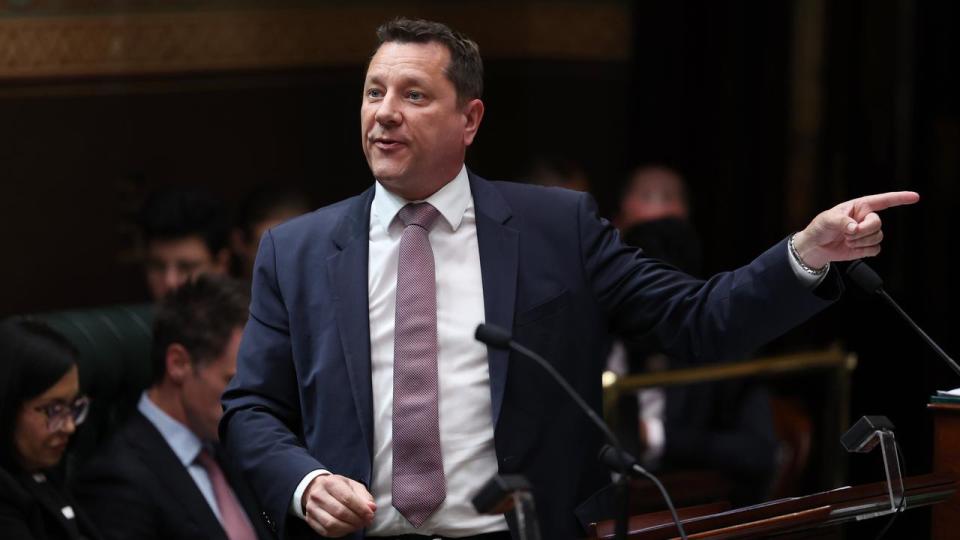Bold plan for 112k homes to fix crisis

The NSW government will allow 112,000 new homes to be built across Greater Sydney and the Central Coast, as Labor faces pressure to address the state’s worsening housing crisis.
The reforms, revealed on Tuesday, are aimed at allowing a more diverse mix of homes across council areas, including residential flats, small apartment units and duplexes around areas within 800m of a town centre, or transport hub.
In total, the homes represent about 30 per cent of properties needed to meet NSW’s 2029 Housing Accord target of 377,000 homes, and extend into the Illawarra and Hunter Coast regions.
Planning Minister Paul Scully said the government needed to change the way it planned new housing to confront the growing crisis, including creating capacity for infill.
“Sydney is one of the least dense cities in the world but fewer than half of councils allow for low and mid-rise residential buildings in areas zoned for such homes,” Mr Scully said.

“Diversity of housing allows people to stay in their communities and neighbourhoods through different stages of their life, with family and friends able to live nearby.
“More housing choice means more options for everyone – renters, families, empty nesters. Density done well means townhouses, apartments and terraces clustered near shops, high streets and parks.
“Sydney has grown using these housing types. Look at homes in Wollstonecraft, Waverton, Erskineville, parts of Wollongong or Newcastle. They’re great places to live, we just need more of them.”
Under the plan, dual occupancy properties will be permitted on low-density R2 zoned land, with terraces, townhouses, and two storey apartment blocks to be built near transport hubs in the identified areas, overriding planning rules set by local governments.
Councils will also not be able to refute a housing proposal on the basis of height, minimum lot sizes and floor-space ratio, with the changes to State Environmental Planning Policy (SEPP) aimed at encouraging councils to adopt more medium-density homes.
The proposed changes come after the NSW government identified what it called a “significant gap” in approval for higher density housing options under council Local Environment Plans (LEP), including one to two story flat units.
According to the state government, only six per cent of LEPs allowed for one and two storey units to be built on low-density R2 zone land. Councils also prohibited resident flats of any scale on R3 medium-density zoned land.
In NSW, councils are able to decide what sort of homes are built in their region, including prohibitions on certain builds. They have recently faced pressure from the state government in its push for greater housing density.

Mr Scully said the uptick in homes would be located in areas close to transport routes, amenities and job opportunities and in R2 and R3 zoning areas which were already zoned for more housing.
“This allows density to be done sensibly in well-located areas, at what’s called density at a human scale,” said Mr Scully.
The announcement has been welcome by advocacy group Committee for Sydney CEO Eamon Waterford who lauded the plan a “big win for sensibly filling in the gaps in our city’s missing middle”.
“These announcements will mean more terraces and low-rise apartments within walking distance of town centres – places where people want to live,” Mr Waterford said in a statement.
“This will allow many more people to access jobs, parks and education, while maintaining the low-rise nature of these suburbs – a win for new residents, and a win for existing residents.”
The move has been welcomed by housing groups across NSW, who have applauded the government for “taking a risk” with the “smart policy”.
Housing Now! chair and Business Western Sydney executive director David Borger said the reform would allow for more density around key areas.
“People need a choice. They need to be able to choose between not just a house or a 30-storey building, but all those other things in-between,” he said.
“This is the biggest mass-rezoning we’ve undertaken in decades.”
NSW Property Council executive Katie Stevenson said currently only two out of 32 councils have allowed the “missing middle-type development,” which was a “clear” sign local planning policies needed to change.
“We really support the Minns government’s bold approach in making sure those rules apply consistency across NSW.”
She said there already was “huge demand and interest” from developers willing to create the three to six-storey developments.
“The development sector is ready, willing and able to work with local families, or with project home builders that want to get these sorts of developments off the ground,” said Ms Stevenson.
Opposition Leader Mark Speakman said Tuesday’s announcement failed to properly consult with local councils, and lashed it as an “arrogant approach from this government”.
“We accept there has to be ambition, we accept there has to be increased density and we accept that that is particularly so around major public transport and town centres, but in the first instance, you should try to bring local communities along,” he said.
“You should try to engage with them so that the design in this increased densities (is) in the way that best suits those communities.”


